Larger than Life – Visiting the Guggenheim in Bilbao
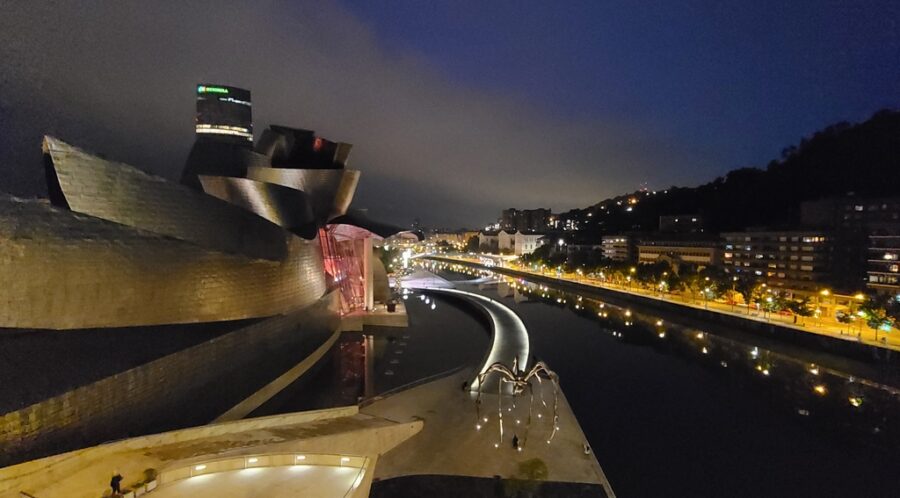
There are no rules. This is how art is born, how breakthroughs happen. Go against the rules or ignore the rules. That is what invention is about. Helen Frankenthaler.
Recently I visited the Guggenheim Museum in Bilbao as part of our family trip to Northern Spain. I was very curious about this museum, since when I was in art school in the early 1990’s there was a lot of hype about it. It was considered one of the most ambitious architectural achievements of the time and designed by a Canadian-American architect, Frank Gehry.
One critic aptly called the museum, “a fantastic dream ship of undulating form in a cloak of titanium”. Its exterior is covered with 33,000 reflective titanium plates (titanium is half the weight of steel) attached like fish scales. The always changing surface is like the Nervion river it overlooks.
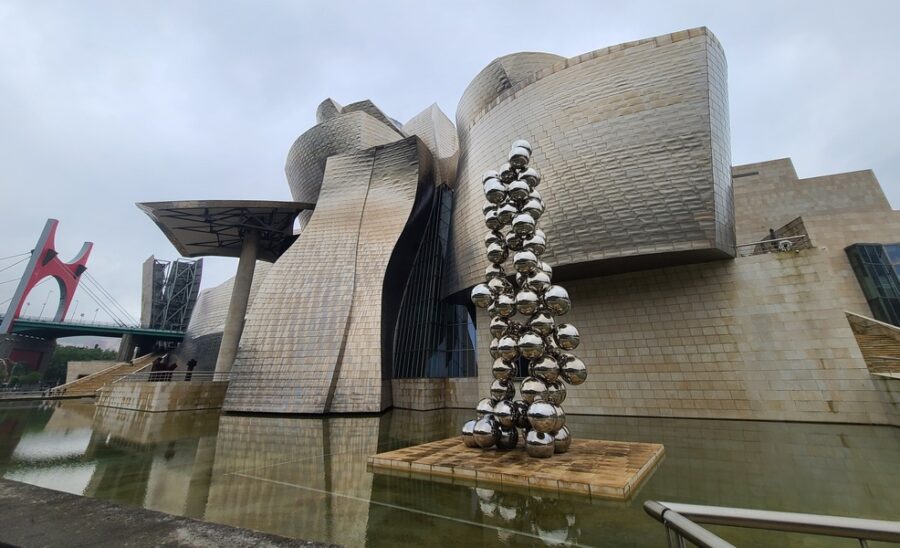
Built to revitalize the port city of Bilbao, the museum cost $89 million (it stayed within budget, but doesn’t include the $12 million annual budget). The city figured this “urban intervention”, which has been featured in a James Bond film and a Mariah Carey music video, had paid for itself within just three years as a tourist attraction.
I’ve heard someone say jokingly, that the museum looks like the architect threw a used napkin on the table and said, “build that”. It is true that the curves on the exterior of the building were meant to appear random and when you step inside it feels more like you are stepping into a geographical space, like a canyon, rather than a building. The open design, and views of the upper floors, allows you to see hundreds of visitors, near and far, at once.
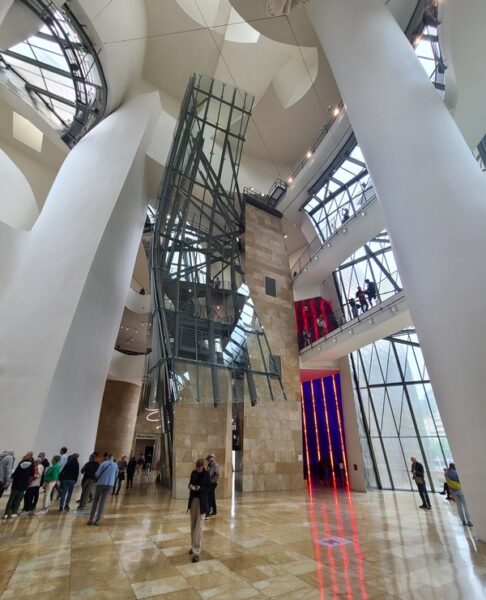
One of the critiques of this museum, is that only very large art pieces may be complimented in its cavernous galleries. This includes work by the post-war American artists, often represented at the museum. One of these pieces, commissioned by the museum, is Richard Serra’s “Matter of Time”. It takes several minutes to walk through and around the various curving weathered steel walls which break up the space, creating walkways. You may then go up to the second floor and from above, watch a stream of miniature gallery-goers moving in and around the same sculptures.
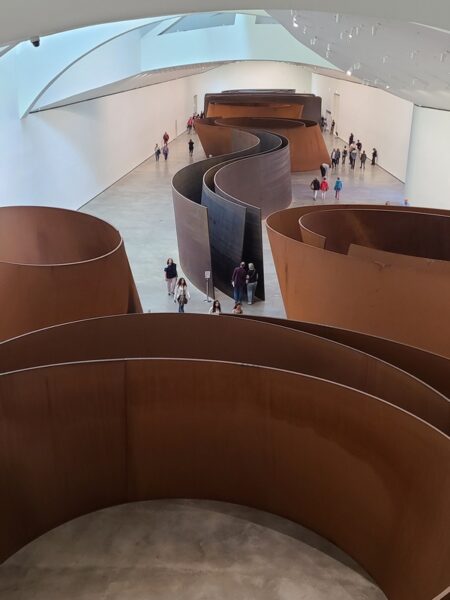
The temporary art exhibit was of Helen Frankenthaler’s paintings. She was one of the only woman artists recognized in the mostly male represented abstract expressionist post-war art movement, championed by the influential art critic Clement Greenberg. The massive gallery lent itself to a chronological overview of Frankenthaler’s large-scale works in which she poured paint onto unprimed canvases. The colours seem to randomly bleed into each other, and the result is a more natural or feminine feel than her contemporary’s work, which I appreciated.
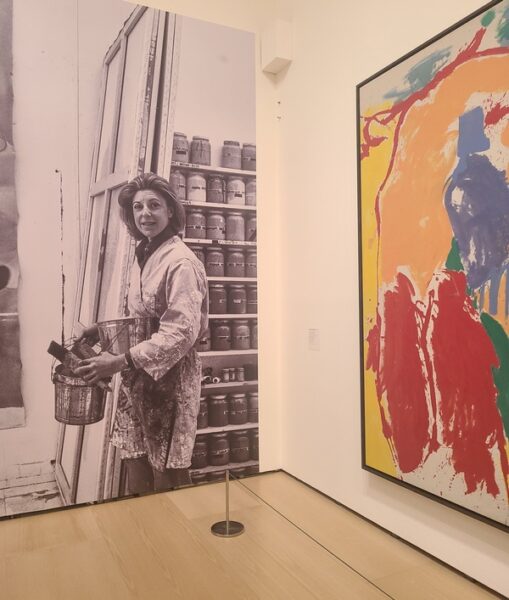
Much of the work in the Guggenheim, such as by Motherwell, Rothko or Pollock is non-objective, meaning it does not, even abstractly, represent anything. Art is pared down to its most basic elements: colour and form, which affect the viewer differently when increased to a large scale. In contrast, the conspicuous sculptures that sit outside the museum are clearly representative.
The first thing you see when approaching the museum, from blocks away, is the giant puppy by Jeff Koons which cheerfully greets guests at the museum’s entrance. Its multi-coloured surface is provided by the hundreds of annual flowers that are planted on it every year. Its overt playfulness almost feels like it is mocking the elite art world that it, at the same time, is proudly representing. On the other side of the museum, facing the river, is one of Louise Bourgeois’ giant spiders called “Maman”, which has a more sinister feel, but is equally photographable for tourists. Small souvenirs of these sculptures, including colourful stuffed puppies, are a dime a dozen at surrounding shops.
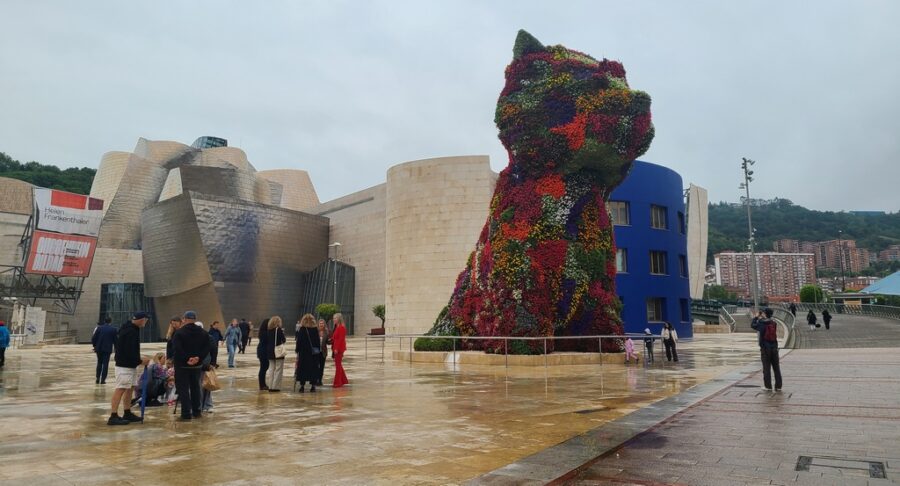
We enjoyed visiting the city, Bilbao, which had so much to offer besides the museum, but if it were not for the museum, we may not have gone there. The museum is so strange, so striking, so domineering, that it’s hard to reconcile it with its typical mid-size European urban backdrop. Especially considering the giant animal or insect sculptures guarding both entrances, you might call the Bilbao Guggenheim an “amusement park of art”, where the goal of the visitor is to enjoy a total immersion into a fantastical world. In this case it is a world where a few artists’ wild dreams of what could be built or created, somehow actually materialized.
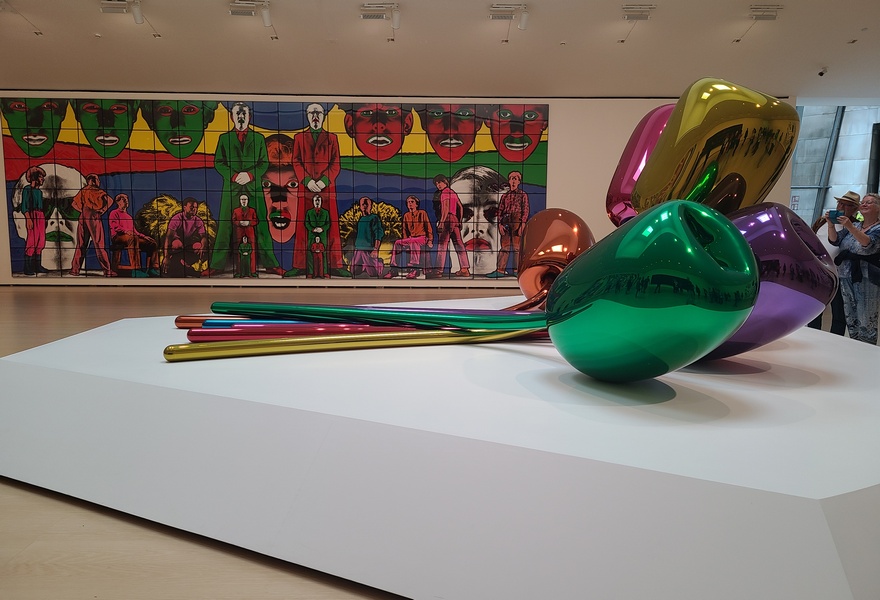
Images top to bottom: A. Guggenheim at night, you can see the spider sculpture, “Maman” B. View of museum behind sculpture “Tall Tree and the Eye” by Anish Kapoor C. View of inside museum, can see part of Jenny Holzer’s neon sculpture in behind D. Richard Serra’s “Matter of Time” from above E. Helen Frankenthaler F. At entrance, “Puppy” by Jeff Koons G. Not non-objective, just large! Gilbert and George (U.K. artists) “Waking” and Jeff Koons “Tulips”.
Also see an impressive arial view of museum HERE
